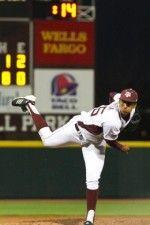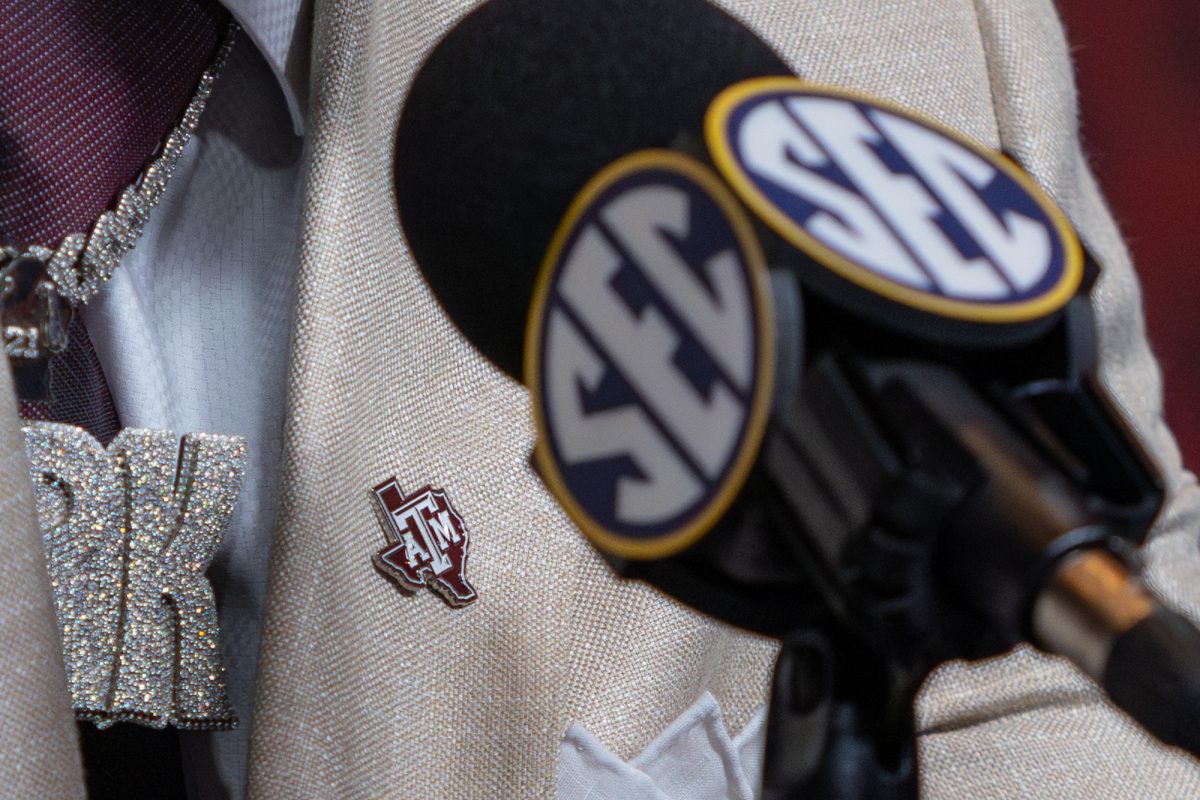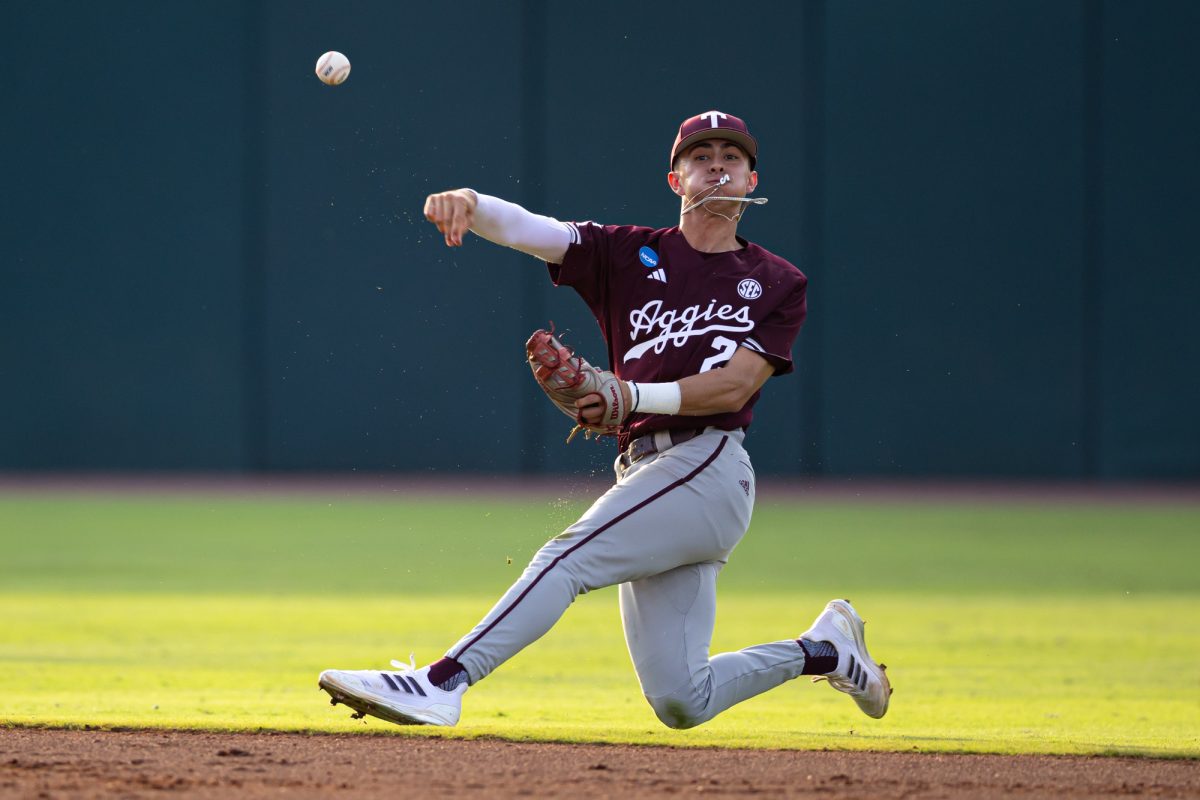The pitch clock a 20-second timer has taken a permanent residence on the upper right-hand side of the Olsen Field scoreboard. The device, with the purpose of regulating game length, was added to Blue Bell Park following A&Ms move to the Southeastern Conference.
The SEC is one of the few conferences that require a visible aid for the NCAA 20-second pitch rule.
The purpose of the rule is to speed up the pace of college baseball games. It was discovered when the pitch clock was successfully trialed at 2010 SEC tournament.
At the 2009 SEC tournament, games lasted an average 3 hours and 17 minutes. A year later under the experimental pitch clock, games lasted 2 hours and 43 minutes. The longest 2010 game matched the 2009 game average, a 17.26 percent decrease in game-time.
Shortly thereafter, the NCAA adopted the rule for all conferences, deciding in December 2010 that no visual clock was necessary. The SEC, though, elected to maintain the visual aspect of the clock, shunning the idea that umpires should keep time with a stopwatch.
At A&M, a fast pace rhythm plays an important role in its game plan, meaning the addition of the visual clock came was an enforcement of rhythm, as junior catcher Troy Stein called it.
We’re all about tempo and pace, Stein said. If anything, it helped us to keep the game going at a fast pace, make the other team play a little faster or more than they’re comfortable with. The umpire’s pushing them to play fast and we’re pushing them to play fast we’re going to kind of spin them out of control.
Pitchers have 20 seconds between pitches with no one on base, starting when the pitcher receives the ball from the catcher and stopping when he begins his motion. A violation results in a subsequent ball.
For hitters, leaving the box with five seconds or less on the clock would result in an automatic strike.
According to freshman pitcher Andrew Vinson, coaches at A&M immediately embedded the fast-pace tempo mindset once players arrived in the fall.
In the fall, coaches prepared us pretty well, Vinson said. We’re taught to play fast to let us control the game. Knowing that, I don’t think the pitch clock bothers us too much. It’s pretty much on our side. It goes with the tempo of our game, that’s how we play.
Sophomore Daniel Mengden pitches as the starter in Saturday matchups and hits in the top of the batting order otherwise.
It kind of keeps a good steady flow, Mengden said. It keeps the game in a good rhythm. You don’t have to rush 90 seconds for five pitches isn’t really that bad so the hitter almost kind of feels more rushed. It’s almost a disadvantage for the hitter in a way.
Additionally, the rule allows only 90 seconds, and 108 seconds for televised games, for pitchers to reach the mound and the first batter to enter the batters box following the final out of a half inning.
According to Stein, a catcher who must don multiple pads, 90-seconds is more than enough time for his teammates to find their places on the diamond.
We’re going to be the first one out of the dugout. We’re going to sprint onto the field, Stein said. [Head coach Rob] Childress talks about beating the other team before the game even starts. We’re going to out-hustle people and that’s just how we play.
Rhythmic enforcement
March 27, 2013

Donate to The Battalion
Your donation will support the student journalists of Texas A&M University - College Station. Your contribution will allow us to purchase equipment and cover our annual website hosting costs.


















